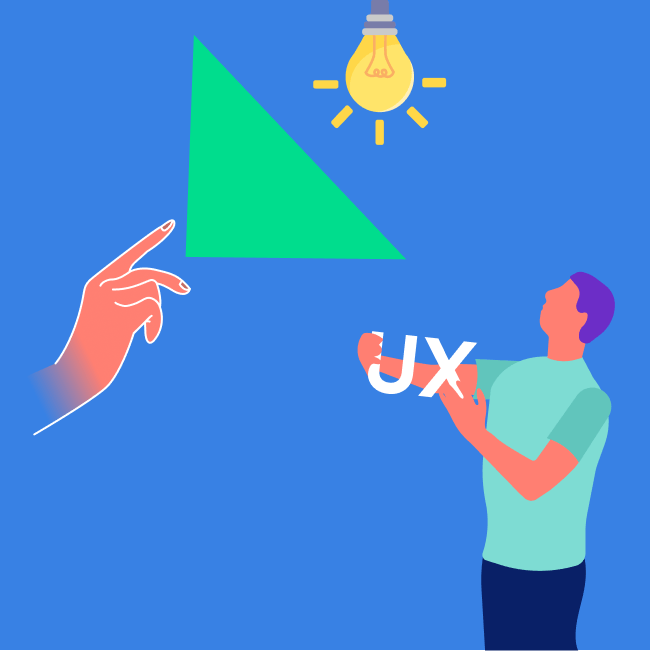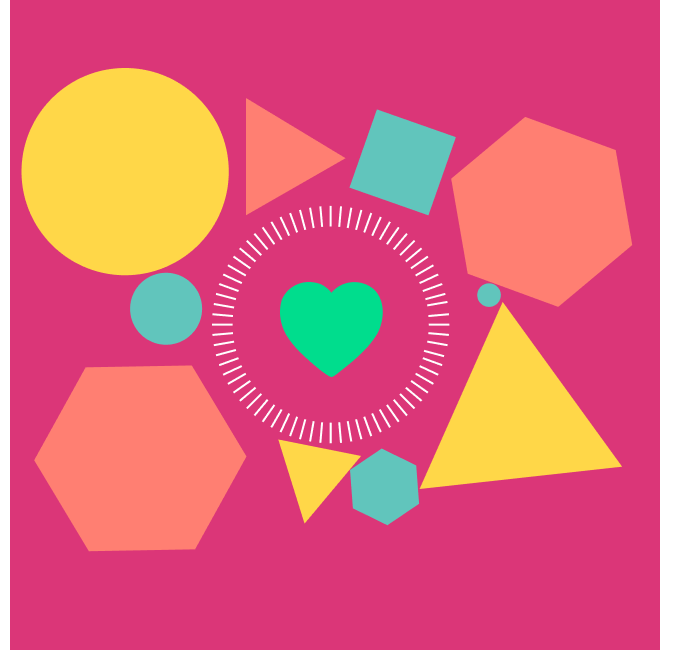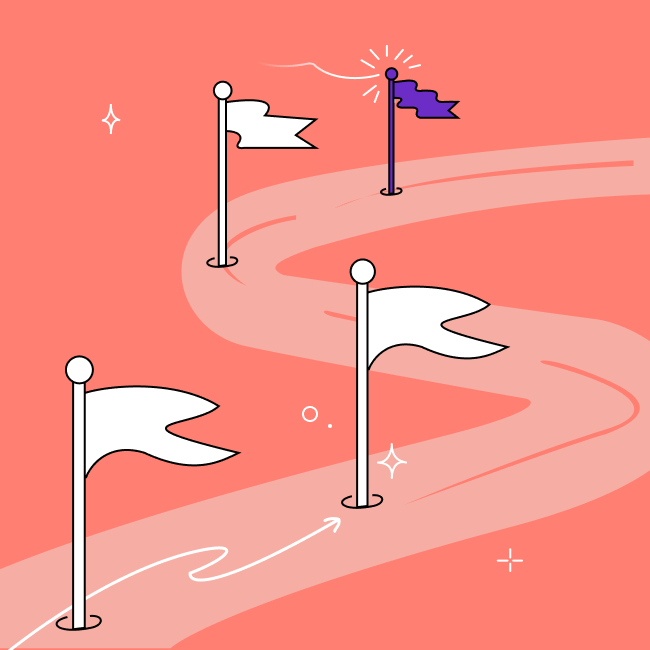The future of brand discovery is at the Intersection of UX and SEO
August 14, 2020 | Read Time : 3 mins
Table of Contents
Google updates the SEO algorithms ranking more than 500-600 times in a year. These algorithms are responsible for ranking the sites on its page. Google from May 2021 has ensured to rank websites according to their page experience. It wants to make sure the user is provided with the correct information and resources to access through.
The inclusion of right and researched keywords has ruled the SEO for the longest time.
However, now User Experience is what Search Engines prefer over heavily loaded keywords sites.
How do UX and SEO affect Brands?
Let’s consider the situation, Ana runs a bakery from home. She has managed to establish a social media presence, and till now, was taking orders via Instagram and Facebook platforms. Ana managed to form a loyal customer base, respecting her brand for premium quality in both food and packaging.
As her business grew, it became difficult to keep track of orders, and she is thinking of launching a website. Ana believes that a website will help her customers place orders quickly, help her business grow more, and cater to every order.
The benefits of having a website:
- Easy for customers to explore
- Accessibility to all orders and payment status
- Helps in growing the business
- Enables exponential reach among potential customers
Website marketing is an assault on the senses. Users will come to your website because of SEO, but they’ll stay for UX design that makes them want more and never leave! You might be thinking “SEO” sounds like a dirty word when realistically it’s just another part in making sure people find what they’re looking for online-and with good reason: successful websites are designed by professionals who know both sides well enough (or should). So don’t overlook this essential aspect if you want success—in anything from conversions
After successfully establishing a social media presence, Ana turned her attention to website marketing. Website design has changed over time and today’s websites need more than just keywords in order for them be successful; instead she needed an understanding of how people interact with UX (user experience) as well as SEO (search engine optimization).
Sharon Sunny, SEO lead at Seer in the podcast ‘The future of digital is at the intersection of SEO and UX,’ talks about the framework that helps combine SEO and UX goals.
SEO is the medium to drive traffic, whereas UX/UI creates first impressions. Both operate together to serve the user’s objective and, as a result, conversions on the website. It’s that extra touch of creativity that helps to increase conversions. Implementing research-based UX strategies is a full-proof method to boost your website.
This enables:
- Easy navigation
- Implementation of the research-based user journey
- Combine user and business goals to complete primary action
- Make it easy for customers to complete their goal
- Implement strategies to acquire new customers or optimise conversions and better engage repeat customers
Denise Baginski from the same podcast mentions the intersection and commonality between the strategies of UX and SEO.
Outlined in the below table are collaborative areas between UX and SEO teams, to implement the ultimate strategy for a high-performance website.
| Research & Discovery | Content Strategy | General Usability |
| Audience Research | Content Optimization | Scannability |
| User Interviews | Internal Linking | Accessibility |
| Keyword Research | Contextual Keyword Placement | Mobile Responsiveness |
| Competitor Research | Page Structure & Hierarchy | Safe Browsing |
| User Journeys | Information Architecture | Page Speed |
Brand Discovery
Ana’s reason for launching a website is to reach a larger audience and make it easy for users to place their orders. This can only take place if users can find and use her site quickly and hassle-free.
Let’s see how the above-listed touchpoints are important for Ana and her website
Research & Discovery
Audience Research
Audience research is a primary step both in UX and SEO. It tells the business who the potential customers are and how they search for their requirements on the web.
User Interviews
Interview is the next step into a deeper understanding of customers. Questions like what kind of users visit your website, how they interact with it, what problems they are facing are answered via the interviews. Interviews also help find problems businesses didn’t know existed but customers were facing daily.
Keyword research
This research helps find the appropriate keywords to be used by the audience to search their requirements. It helps in incorporating accurate keywords into copies, web pages, and UX writing.
Competitor Research
This is one of the essential parts of the research that helps find out how competitors operate. This aspect enables the business to identify successful things and how users relate to them.
User Journey
When utilising a website, a user journey is a path that a user can take to attain their goal. User journeys are used to identify multiple routes for users to attain their goals as quickly and easily as possible while creating websites.
User journeys are crucial in the design of new websites because they highlight present concerns and create an ideal picture from the perspective of a typical user early on in the process. The user journeys are helpful in the creation of a new website as long as the project team includes web designers to assist balance the business goals with the user goals.
Content Strategy
Content Optimization
The process of ensuring that material is prepared in such a way that it is highly contextual and relevant to the widest possible target audience is known as content optimization. Making sure connected keywords are present, adding meta and title tags, and relevant links are all part of the content optimization process. For greater user engagement, you should also optimize headlines for increased CTRs and visual pictures.
Internal Linking
It helps put different resources which users would like to explore added to your website. It helps create engagement with users and have a sense of control to access more information from one web page or site.
Contextual Keyword Placement
Instead of picking managed placements individually, contextual placement targets are based on website content. Your ads will be displayed next to similar content throughout the internet and the Google Display Network when you use Content Keyword targeting.
Advertisements are matched to each web page’s major topics based on variables such as text, page structure, link structure, and language. This is distinct from the Google Search network’s keywords, which are used to match search phrases typed into Google rather than the content of specific web pages.
Page Structure & Hierarchy
While designing a website, user pathways are designed during this stage. Page structure and hierarchy allow the SEO and UX team to collaborate and place necessary elements which they want users to explore during their course of action.
Information Architecture
Information architecture is an essential part of the UX design process. It focuses not just on what content users see, but also on how they navigate to find their desired information and use it efficiently in a competitive marketplace where there’s always something new popping up out of nowhere! The right organisation will ensure your app or website can stand strong against its competitors’ offerings while gaining more popularity within niche markets because people like you care enough about them as customers (and employees!).
General Usability
Scalability
Optimization of content (text, image, video, etc.) makes sure the user is scanning across the page and can trace every vital information they need to see.
Accessibility
By following standards of accessibility, designers and developers can allow ease of navigation and comprehension for users and make the interaction effortless.
Mobile Responsiveness
The website needs to make sure its web pages are accessed through various devices, as users can access the website from different devices.
Safe Browsing
It is a ranking factor for your website. Safe browsing ensures users from harmful downloads and web pages.
Page Speed
Optimization of content makes sure the web pages load fast. Here the website owners also have to make sure their page loads on all kinds of devices.
With SEO teams incorporating UX abilities into their toolkits and UX teams taking a broader approach by considering different access points, we can reinvent how we work in order to get better outcomes.
Throughout projects, productive communication can take place, and expertise can be pooled to understand difficulties and give appropriate solutions across website entry points by functioning as one team. This will result in a significantly improved search-to-landing page-to-conversion experience.
We will retain control of the levers determining organic search performance if we adapt and adopt the UX skill set. This will benefit both companies and consumers, as we will be in a better position to provide the optimal experience for each search a consumer conducts during the buying journey.






